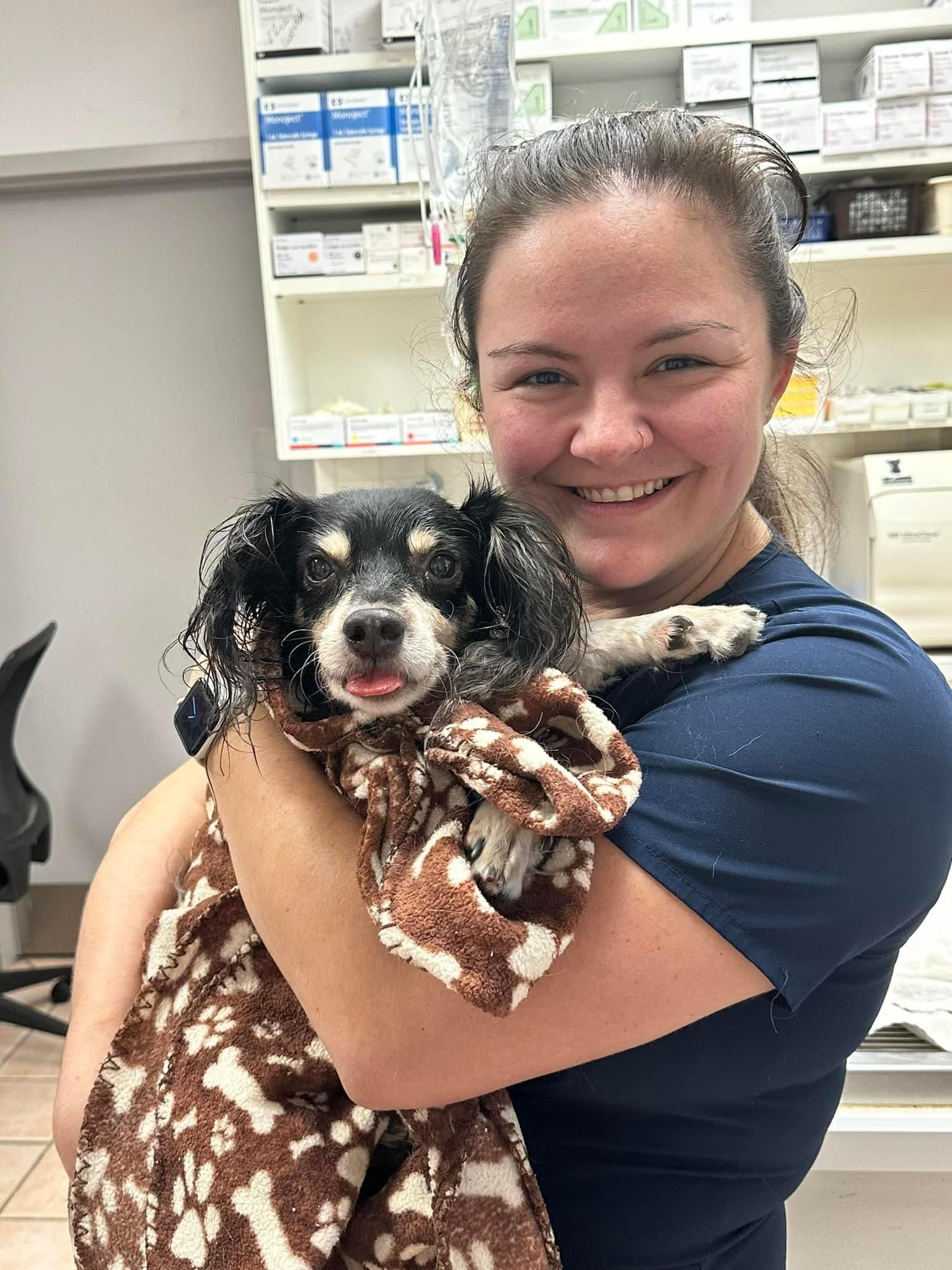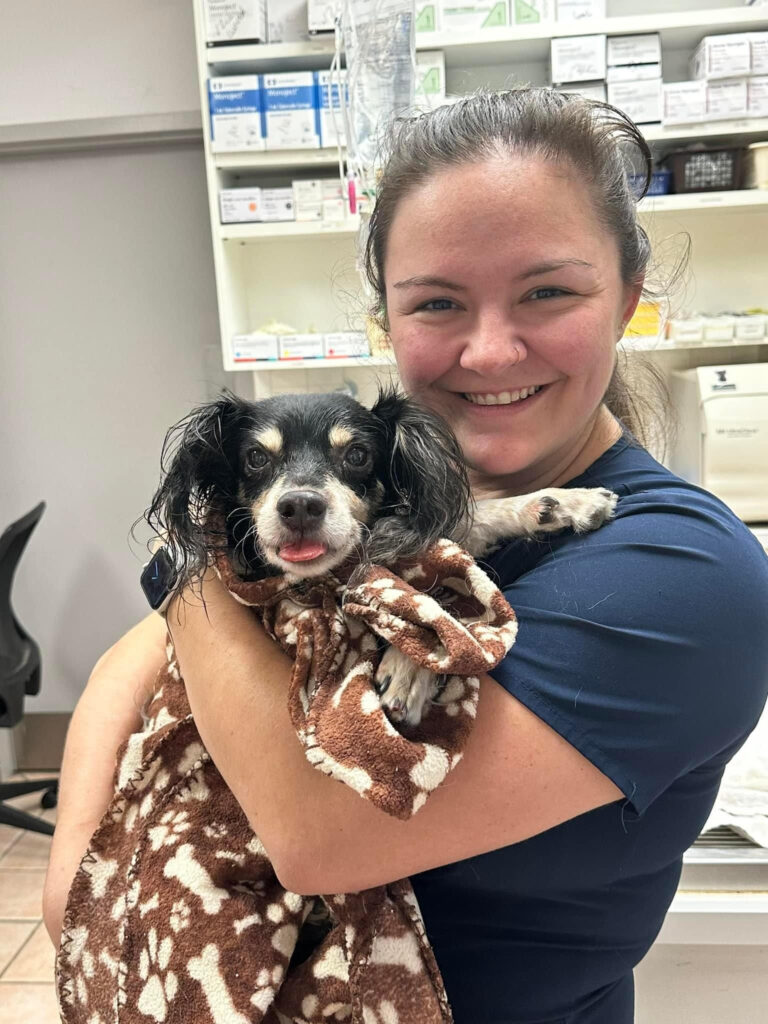
August 28, 2024
Recognize the Signs of Pain in Pets
As a veterinarian, I see a lot of pets that are in some degree of pain. The signs are not always extremely apparent or in your face. Dogs can’t specifically tell you “my leg hurts” or “my mouth hurts”. One of my goals is to ensure the well-being of your pets. Pain management is a big aspect of their care, whether it is associated with an injury, surgery, dental disease or arthritis. The goal of this blog is to help you recognize the signs of pain in pets and the available treatment options.

Signs to Monitor For:
People can clearly communicate when they are in pain. Pets can’t come up to us and tell us that there is something wrong. Typically there are subtle things to watch for. Occasionally their pain is obvious, but that is not typically the case.
- Behavior Change: being withdrawn, aggressive or irritable.
- Decreased Activity Levels: if your pet is hiding more, not as playful or as apt to do things that they used to do.
- Appetite: A decrease in food or water intake.
- Vocalizations: Increased meowing, whining or growling.
- Physical Signs: Limping, stiffness, or difficulty standing and walking.
- Grooming Changes: Over-grooming or stopping grooming can indicate discomfort.
Treatment Options for Pain Management:
We can examine your pet and suggest different avenues to go down diagnostically. We can pursue different treatment options depending on what we find.
1. Adequan (Polysulfated Glycosaminoglycan)
Adequan is an injectable medication that helps manage pain and inflammation associated with osteoarthritis. It works by improving joint health and reducing cartilage degradation. Regular administration can enhance joint function, especially in dogs suffering from arthritis.
2. K-Laser Therapy
K-Laser therapy uses low-level laser technology to stimulate healing and reduce pain. It helps alleviates inflammation and increases blood flow. It’s typically used for conditions like arthritis and soft tissue injuries.
3. NSAIDs (Non-Steroidal Anti-Inflammatory Drugs)
NSAIDs are commonly prescribed to manage pain and inflammation. These medications provide relief from pain and swelling but should be used under veterinary supervision to prevent potential side effects. Do not use any over the counter human NSAIDs as these can cause major issues in dogs and cats.
4. Gabapentin
Gabapentin is prescribed to manage neuropathic pain. It is also used as an add-on therapy for arthritis. It works by altering nerve pain pathways and can be particularly useful in cases where other pain management strategies are not sufficient.
5. Solensia
Solensia is a newer medication for managing osteoarthritis pain in cats. It is a monoclonal antibody that targets nerve growth factor. Nerve growth factor is involved in pain perception. Solensia is a once a month injection that provides relief from arthritic pain and improves mobility. My personal 17 year old cat is on these injections currently and it has helped improve her quality of life.
6. Librela
Similar to Solensia, Librela has a similar mechanism of action and is used for osteoarthritis pain in dogs. It has been extremely helpful for many older and arthritic dogs. My 10 year old dog Benson is on this monthly and is currently thriving. He has been on it since January.
7. Weight loss
Pets with arthritis, orthopedic or neurologic conditions can benefit from being a healthy weight. Discuss with us an appropriate weight loss plan, if getting weight off of your pet is difficult. Some dogs are hypothyroid and need thyroid supplementation to achieve weight loss goals.
8. Dental
Dental disease is a very common source for animal pain. A lot of pets have underlying dental disease that their owners are unaware of. Abscessed teeth can cause a great deal of pain. If your pet has dental disease, we can perform a cleaning with dental radiographs. Your pet may need further dental care such as extractions or referral. Doing routine dental cleanings and brushing teeth can certainly help prevent future problems. The picture below is from a dog with several abscessed teeth that needed removing. You can see hair, debris and calcified tarter wrapped around the tooth and roots.

Schedule Your Exam
Recognizing pain and addressing it effectively is crucial to helping your pets continue to live a happy life. If you notice any signs of pain, consult Gulf Breeze Animal Hospital to talk about the most appropriate treatment options for your pet. Cornell has an excellent link about osteoarthritis in dogs. There are a lot of options out there. It just takes finding what is right for your pet!
Leave a Reply
Copyright 2022 | All Rights Reserve Gulf Breeze Animal Hospital is part of MCCLURE VETERINARY SERVICES, P.L.L.C.